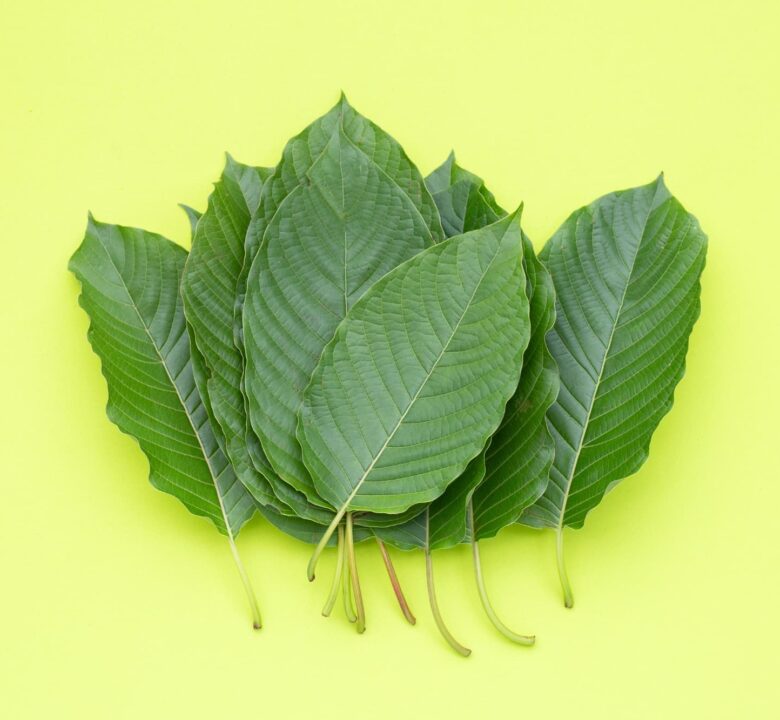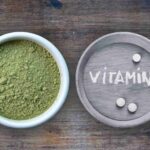Kratom (Mitragyna speciosa), a tropical tree native to Southeast Asia, has gained popularity in recent years, especially in the US. Kratom is often used by individuals to self-treat concerns such as anxiety or opioid addiction, highlighting its therapeutic potential.
Despite these purposes, the leaves of the kratom plant contain complex compounds that merit closer examination due to their dual nature of effects.
The leaves of the kratom plant contain alkaloids that interact with opioid receptors in the brain, producing sensations of pain relief and euphoria.
However, as kratom is largely unregulated, concerns have arisen regarding the potential contamination of kratom products with harmful substances, including bacteria. The lack of standardized manufacturing and quality control processes in the kratom industry has led to questions about the purity and safety of these products for human consumption.
In this article, we’ll examine the available scientific evidence concerning the presence of bacterial contamination in commercial kratom products and discuss the implications for consumer safety.

Chicago Case Study
A study conducted by Prozialeck et al. (2020) investigated the microbial contamination of kratom products purchased from various “head” and “smoke” shops in the western suburbs of Chicago, Illinois. The researchers tested eight different kratom products for the presence of bacteria, fungi, and specific pathogens like Salmonella.
The results of the study revealed that six out of the eight kratom products tested positive for microbial contamination, including both bacteria and fungi. The levels of contamination varied widely among the samples, ranging from zero to over one million colony-forming units per gram (CFU/g) of product.
These findings highlight the potential risks associated with consuming kratom products that have not undergone proper microbial testing and quality control measures.
Factors Contributing to Microbial Risks in Kratom
The presence of microbial contamination in kratom products can be attributed to several factors, primarily stemming from the lack of regulation and standardized manufacturing practices in the kratom industry.
Kratom is minimally regulated, and there are no universal guidelines for the growing, harvesting, processing, and storage of kratom leaf material.
Contamination can occur at various stages of the kratom supply chain, from the initial growing and harvesting of the leaves to the processing and packaging of the final product. Improper drying and storage conditions can create an environment conducive to the growth of bacteria and fungi, as kratom leaves are susceptible to microbial growth if not handled correctly.
Furthermore, the proliferation of online and unregulated vendors has made it easier for consumers to access kratom products that may be of unknown purity and safety. Without proper regulation and oversight, these vendors may sell kratom products that have not undergone rigorous testing for contaminants, putting consumers at risk of exposure to potentially harmful microbes (Prozialeck et al., 2020).
Challenges in Assessing Bacterial Contamination of Kratom
Assessing the true extent of bacterial contamination in kratom products is challenging due to several factors. One major obstacle is the lack of mandatory testing requirements for microbial contamination in kratom products. Without standardized testing protocols and regulations, many kratom products enter the market without undergoing thorough microbial analysis, making it difficult to determine the prevalence of contamination.
Additionally, there is limited surveillance and tracking of kratom-related adverse events, including those potentially caused by bacterial contamination. The FDA has issued warnings about the potential dangers of kratom use but has not implemented a comprehensive monitoring system for kratom-related illnesses. This lack of systematic data collection makes it challenging to assess the true impact of contaminated kratom products on public health.
Another complicating factor is the frequent co-consumption of kratom with other substances, such as opioids or alcohol. This polysubstance use can make it difficult to establish a clear causal link between kratom use and adverse health outcomes, as the effects of other substances may confound the relationship.
To better understand the risks associated with bacterial contamination in kratom products, more research is needed on the prevalence and health impacts of contaminated kratom. Studies that systematically test a wide range of kratom products for microbial contamination and investigate the potential health consequences of consuming contaminated kratom are essential for informing public health policies and consumer safety guidelines.

Kratom Consumer Protection Act (KCPA) and Safer Kratom Sources
The lack of regulation in the kratom industry has led to concerns about the safety and quality of kratom products available to consumers. In response, some states have introduced the Kratom Consumer Protection Act (KCPA) to establish standards for the manufacture, distribution, and sale of kratom products.
While the KCPA is not yet widely adopted, some online kratom vendors have taken proactive steps to ensure the safety and quality of their products. These vendors often adhere to strict manufacturing practices, such as implementing rigorous testing protocols and following current Good Manufacturing Practices (cGMP).
Reputable online kratom vendors subject their products to a series of purification processes to remove contaminants and potential adulterants. Additionally, they engage third-party laboratories to test their products for purity, potency, and the presence of harmful substances such as heavy metals and microbes.
By prioritizing transparency and making certificates of analysis readily available to consumers, these online vendors demonstrate their commitment to providing safe and high-quality kratom products.
Clearly, consumers looking to buy kratom online can reduce the risk of exposure to contaminated products from reputable companies compared to unregulated local vendors.
As more states adopt the KCPA and the kratom industry continues to evolve, it is hoped that access to safer, properly regulated kratom products will expand, reducing the risks associated with contaminated or adulterated kratom for consumers.
The Road Ahead for Kratom Safety and Consumer Protection
The available evidence suggests that bacterial contamination is a genuine concern in the current kratom market. Studies, such as the one conducted by Prozialeck have demonstrated that a significant portion of kratom products tested positive for microbial contamination, including bacteria and fungi. While not all products are contaminated, the lack of regulation and standardized quality control measures in the kratom industry contributes to the risk of contamination.
Consumers should be aware of the potential for exposure to harmful bacteria when using kratom products, especially those purchased from unregulated or untested sources. The absence of mandatory testing requirements and limited surveillance of kratom-related adverse events makes it challenging to assess the full scope of the problem and its impact on public health.
To address these issues, there is a clear need for improved surveillance systems, stricter product safety standards, and more research on the prevalence and health consequences of bacterial contamination in kratom products. The adoption of the KCPA by more states could help establish a regulatory framework that prioritizes consumer safety and sets quality control standards for the industry.
In the meantime, consumers can reduce their risk by purchasing kratom products from reputable online vendors that adhere to good manufacturing practices, conduct rigorous testing, and provide transparency through readily available certificates of analysis. By staying informed and advocating for safer, properly regulated kratom products, consumers can help drive positive change in the industry and protect themselves from the potential dangers of contaminated kratom.
For Further Reading
- Bergen-Cico, Dessa. “Chapter 89 – Kratom (Mitragyna speciosa) Use, Addiction Potential, and Legal Status.” ScienceDirect.com. 2016
- Congress.gov. “S.3039 – Federal Kratom Consumer Protection Act.” Congress.gov. 2023
- Prozialeck, Walter C. et al. “Evaluation of the Mitragynine Content, Levels of Toxic Metals and the Presence of Microbes in Kratom Products Purchased in the Western Suburbs of Chicago.” NIH.gov. 17 August 2020
- Staff writer. “Kratom Lab Testing: Why it is Critical for Consumer Safety.” Labstat.com. 2023






